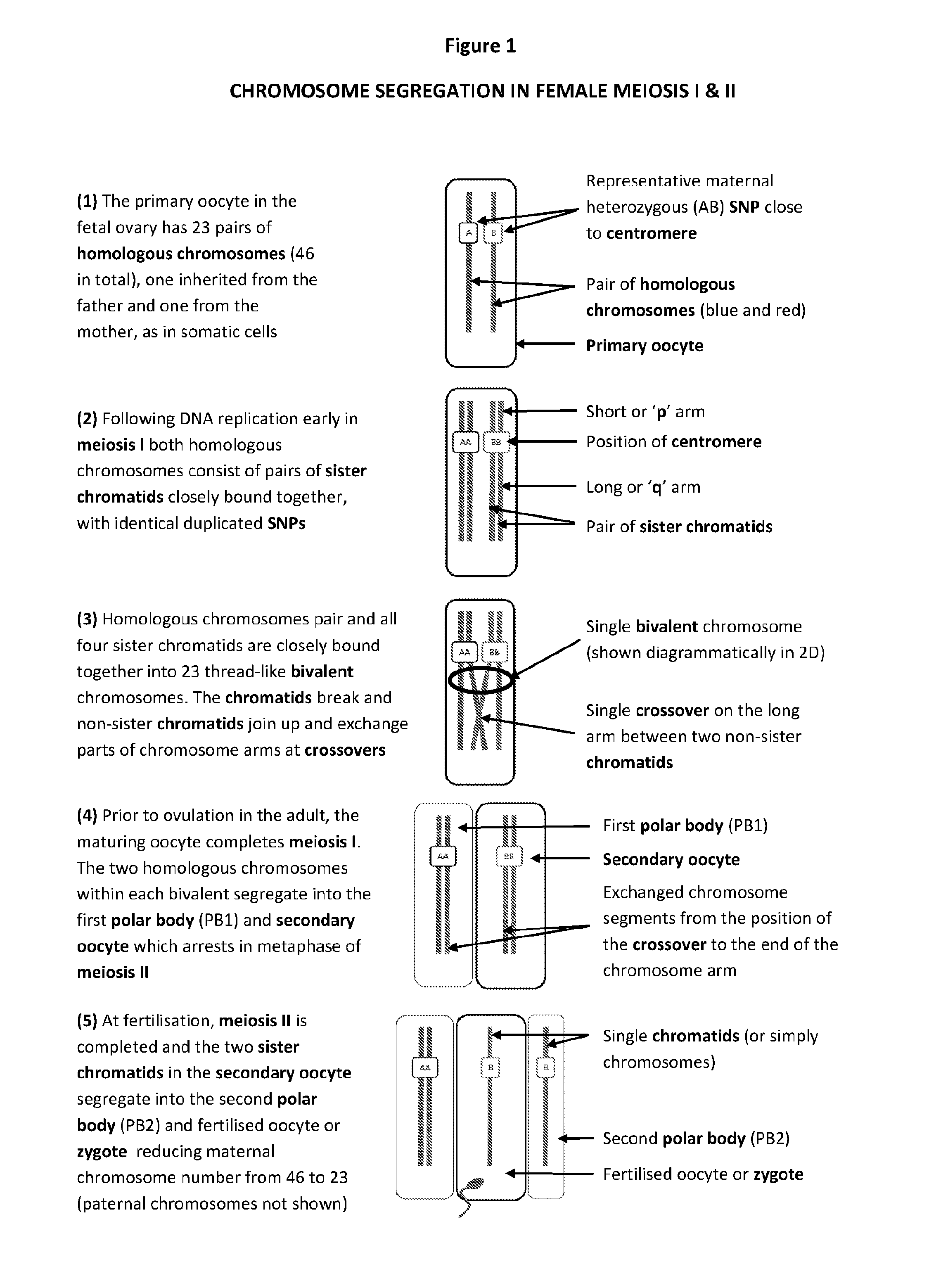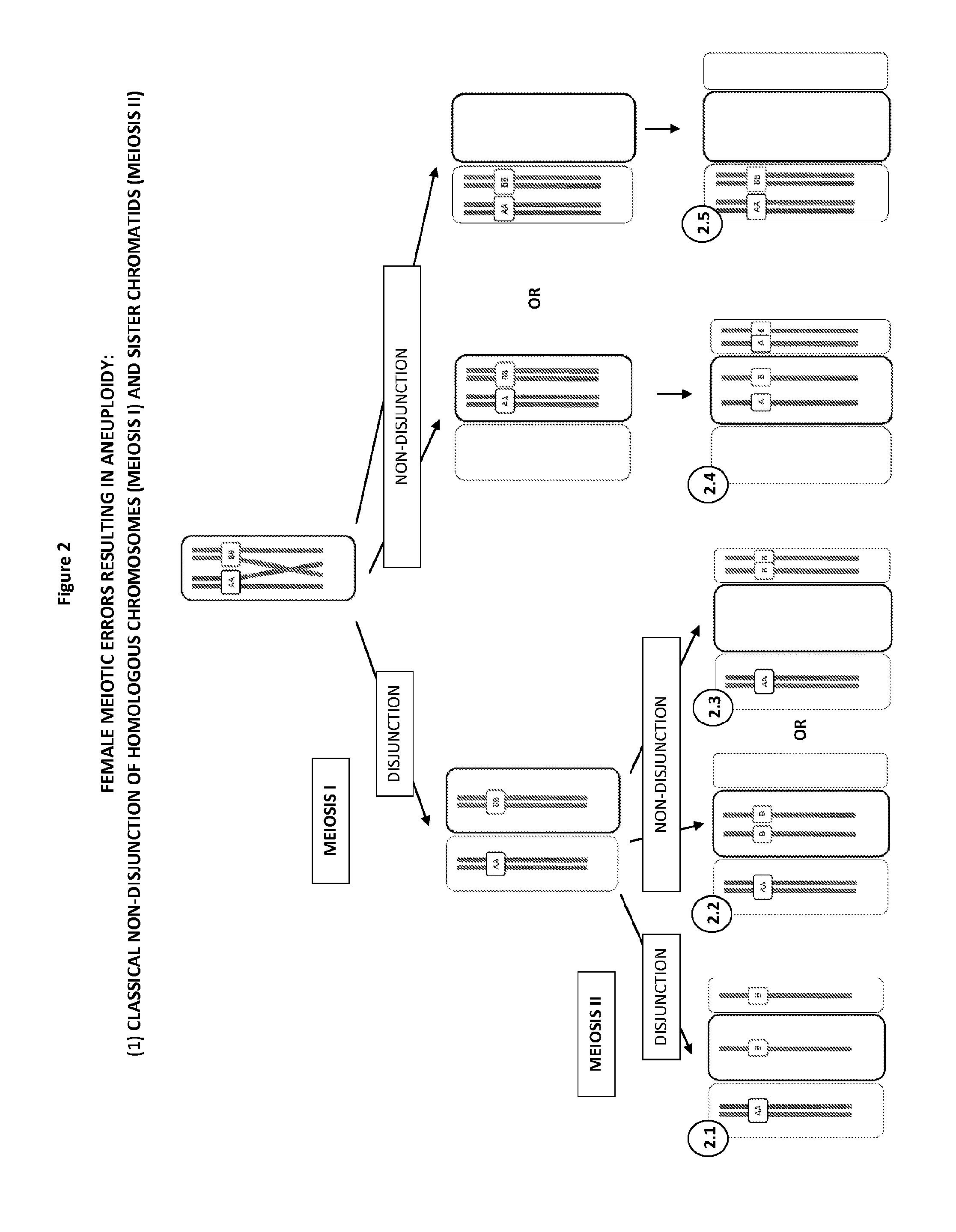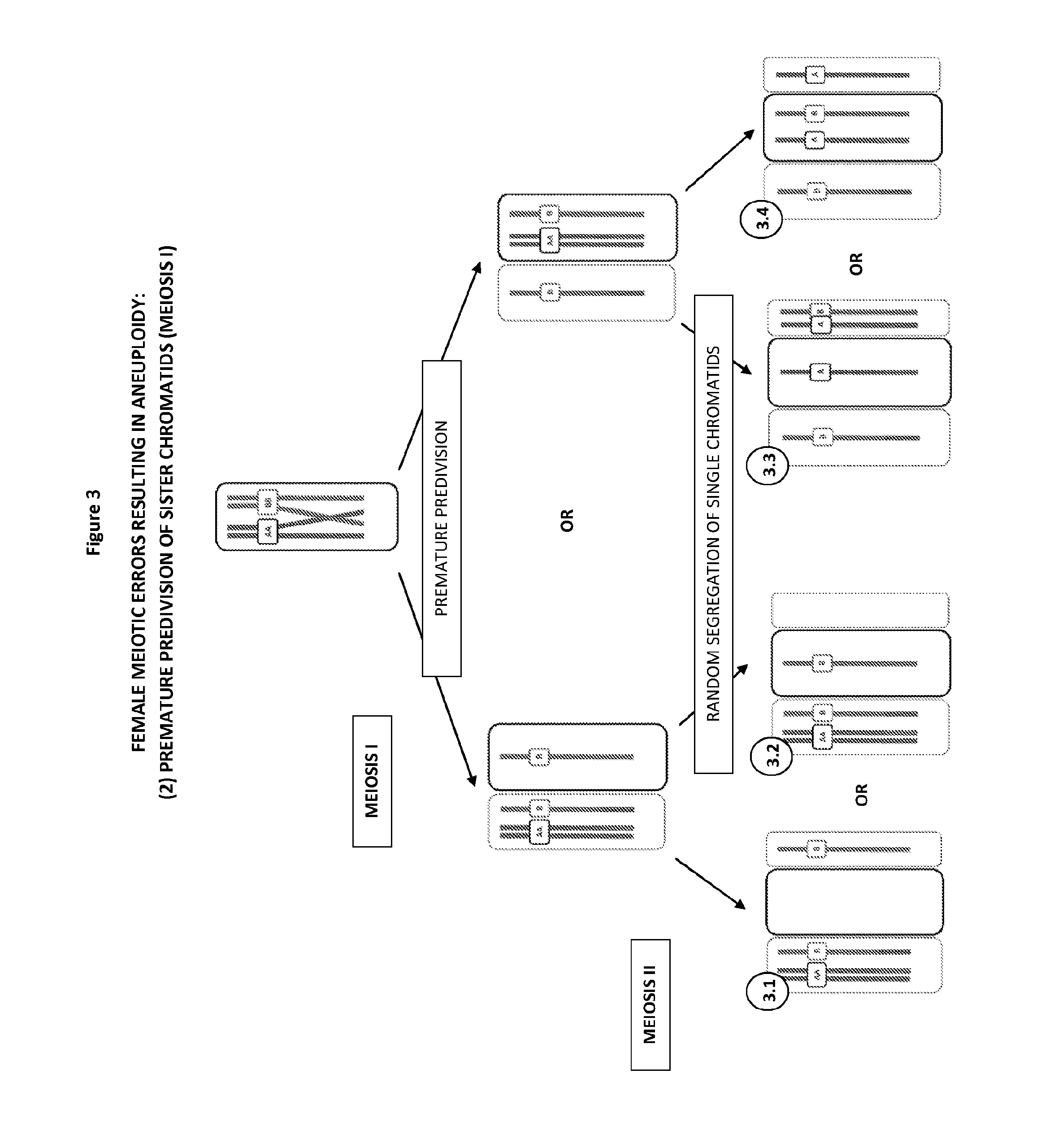Assessment of risk of aneuploidy
- Summary
- Abstract
- Description
- Claims
- Application Information
AI Technical Summary
Benefits of technology
Problems solved by technology
Method used
Image
Examples
example 1
Meiotic Errors that can Lead to Aneuploidy in a Fertilized Egg
[0203]As illustrated in FIG. 1, normally in meiosis I the two homologues of each chromosome, now consisting of pairs of sister chromatids, pair up and join together, homologous non-sister chromatids undergo one or more recombinations or crossovers.
[0204]Subsequently the homologous chromosomes of the condensed bivalent chromosome are to-oriented' to the same spindle poles, so that the homologous chromosomes separate away from each other into PB1 and the secondary oocyte. In meiosis II, the two sister chromatids separate into PB2 and fertilised oocyte (zygote or egg) following fertilisation.
[0205]It can thus be seen that in the in the normal (euploid) oocyte all centromeric regions of each chromosome are homozygous in PB1, since this part of the sister chromatids will generally not be significantly affected by recombination or crossovers.
[0206]As illustrated in FIG. 2, a classical textbook mechanism causing errors in meiosi...
example 2
Assessment of CH in PB1 from Number of Different Oocytes
[0213]In this example the status of defined SNPs were assessed in PBs (“PB1 genotype”) and corresponding secondary oocytes (“Egg genotype”).
[0214]Methods
[0215]PBs and oocytes were lysed and the whole genome amplified (WGA) by multiple displacement amplification according to manufacturer's instructions (Repli-g, Qiagen). WGA products were then genotyped on a SNP genotyping bead array again according to the manufacturer's protocol (Infinium Human CytoSNP-12, Illumina). The genotype data was exported as a text file and imported into Microsoft Excel and a macro was used to identify SNPs flanking the centromeres of each chromosome and display the results. The macro also calculated the percentage of heterozygous SNPs.
[0216]The maternal genotype was ascertained using the same bead array but genomic DNA isolated from a blood sample by standard methods was used. This data was also imported into Excel and used to identify all of the hete...
example 3
Comparison of Array CGH for Quantitative Detection of Aneuploidy in PB1 and PB2 with SNP Genotypinq, Maternal Haplotyping and Total Heterozygosity and / or CH Analysis in PB1 alone, or PB1 and PB2
[0235]Ten mature MII arrested oocytes were collected from a patient having aneuploidy testing by array CGH of PB1 and PB2. PB1 was biopsied from each oocyte prior to intracytoplasmic sperm microinjection and, following fertilisation and resumption of meiosis, PB2 was also biopsied. Both polar bodies were lysed, DNA amplified by WGA and aliquots of the products used for array CGH. The array CGH results indicated that all of the embryos had one or more copy number abnormalities in PB1 and / or PB2 except one, presumed euploid embryo (Embryo # 1), which was therefore selected for transfer (Table 2). With the patients consent, the remaining 9 presumed aneuploid embryos were lysed and the DNA amplified by WGA. Genomic DNA from both parents, WGA products from all polar bodies and the corresponding em...
PUM
| Property | Measurement | Unit |
|---|---|---|
| Fraction | aaaaa | aaaaa |
| Fraction | aaaaa | aaaaa |
| Fraction | aaaaa | aaaaa |
Abstract
Description
Claims
Application Information
 Login to View More
Login to View More - R&D
- Intellectual Property
- Life Sciences
- Materials
- Tech Scout
- Unparalleled Data Quality
- Higher Quality Content
- 60% Fewer Hallucinations
Browse by: Latest US Patents, China's latest patents, Technical Efficacy Thesaurus, Application Domain, Technology Topic, Popular Technical Reports.
© 2025 PatSnap. All rights reserved.Legal|Privacy policy|Modern Slavery Act Transparency Statement|Sitemap|About US| Contact US: help@patsnap.com



